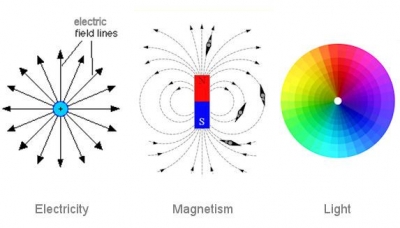What is a Robot?
 A robot is an automatic machine which can work like a human being. It can replace man in various branches of scientific and industrial tasks because it does not suffer from human limitations. It may or may not resemble a human being but definitely can work like a human being. The robots which resemble humans are called androids.
A robot is an automatic machine which can work like a human being. It can replace man in various branches of scientific and industrial tasks because it does not suffer from human limitations. It may or may not resemble a human being but definitely can work like a human being. The robots which resemble humans are called androids.The word ‘robot’ was first used in the play ‘Rossum’s Universal Robots’ by the Czechoslovak dramatist, Karel Capek, who had derived it from a Czech, word ‘Robota’ which means a forced or bonded labourer.
The industrial revolution and automations stimulated the invention of robotic devices to perform certain human tasks. A human worker, however superb a craftsman he may be has certain limitations. He cannot work continuously in a hostile environment. He cannot work for long periods because he gets tired. He may be in short supply and may be expensive to hire. Modern industrial robotic devices aim to substitute a machine for man in hostile environments, cut costs by replacing expensive hand labour with cheap dependable machines, and provide versatile, all purpose robots or mechanical devices at predictable costs. Robot is such a machine which does not get tired, does not go on strike and does not demand increase in salary.

Robots can perform a variety of jobs such as welding and painting a car, house cleaning, cutting the grass of a lawn, working in nuclear plants or travelling to space. They can also play chess, work as a watchman, cut the wool of a sheep and pluck fruits from trees.
Robots of higher level are capable of adapting to changes in environment. They are also capable of making decisions with the help of computers. A more complex robotive device in modern transportation is the automatic aircraft pilot which can control routine flights. An android robot named Shaky Robot was developed at Stanford Research Institute in California to do a variety of research jobs.
Japan has the largest number of robots in the world. The United States of America, Britain, Germany, Sweden, Italy, Poland, France, India, etc are also using robotic devices for different purposes. All robotic devices are controlled by computers.












 According to the ancient philosophers, every substance was thought to be made up of very small particles. But because of the lack of scientific knowledge they could not prove it through experiments. John Dalton was the first scientist who propounded the atomic theory in 1803. According to his theory, every element is made up of very small particles called atoms. Atom is a Greek word which means “that cannot be cut” (‘A’ means ‘not’ and ‘tom’ means ‘cut’). Atom can neither be created nor destroyed. Atoms of the same element are similar but atoms of different elements are dissimilar. All these arguments of Dalton have been proved wrong by the modern researchers. It is now an established fact that atom is not the smallest particle of matter. In fact, it is made up of still smaller particles.
According to the ancient philosophers, every substance was thought to be made up of very small particles. But because of the lack of scientific knowledge they could not prove it through experiments. John Dalton was the first scientist who propounded the atomic theory in 1803. According to his theory, every element is made up of very small particles called atoms. Atom is a Greek word which means “that cannot be cut” (‘A’ means ‘not’ and ‘tom’ means ‘cut’). Atom can neither be created nor destroyed. Atoms of the same element are similar but atoms of different elements are dissimilar. All these arguments of Dalton have been proved wrong by the modern researchers. It is now an established fact that atom is not the smallest particle of matter. In fact, it is made up of still smaller particles. In 1905, Albert Einstein, established a relationship between mass and energy. He proposed a formula which is known as the ‘mass-energy relation’. According to this formula if mass ‘m’ is converted into energy then E=mc, where ‘c’ is the velocity of light and E is the energy released. According to this formula the energy available by the conversion of half a pound of matter will be equal to that produced by exploding 7 million tons of dynamite.
In 1905, Albert Einstein, established a relationship between mass and energy. He proposed a formula which is known as the ‘mass-energy relation’. According to this formula if mass ‘m’ is converted into energy then E=mc, where ‘c’ is the velocity of light and E is the energy released. According to this formula the energy available by the conversion of half a pound of matter will be equal to that produced by exploding 7 million tons of dynamite.